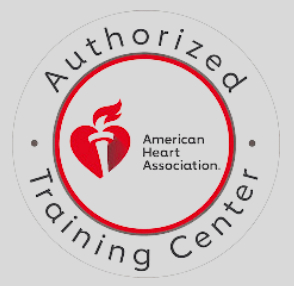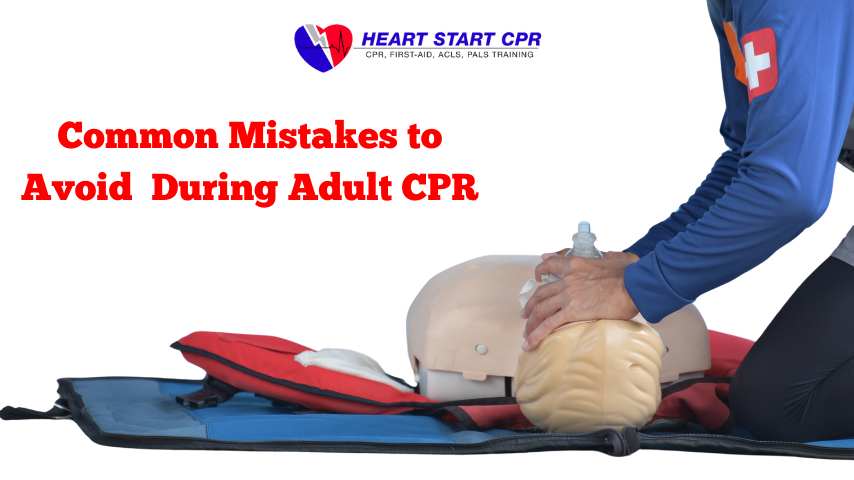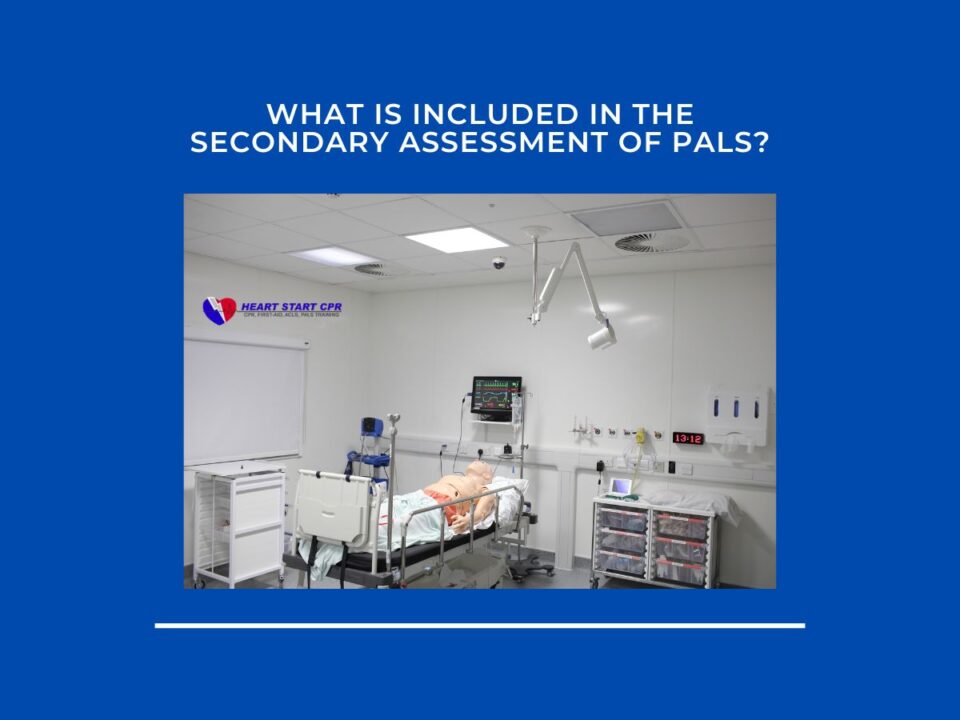
When to Perform CPR?
June 4, 2024
What is the Preferred Method for Pulse Check in an Infant?
June 4, 2024Table of contents
- 1. Not Calling Emergency Services Immediately
- 2. Not Starting Compressions Immediately
- 3. Performing Ineffective Chest Compressions
- 4. Not Providing Rescue Breaths
- 5. Stopping CPR Too Soon
- 6. Poor CPR-Related Communication
- 7. Lack of Practice and Overconfidence
- 8. Poor Location Awareness
- 9. Neglecting Return of Spontaneous Circulation Care
- Conclusion
- FAQS about CPR Mistakes
Cardiopulmonary resuscitation, commonly known as CPR, is a lifesaving technique that can keep oxygen flowing to the victim’s brain until emergency medical services arrive. Performing effective chest compressions and rescue breaths is critical for restarting the heart in someone who has suffered cardiac arrest. However, there are some common mistakes that are frequently made during adult CPR that should be avoided. Keep reading to learn about the most important errors to avoid when providing CPR to help save someone’s life.
1. Not Calling Emergency Services Immediately
One of the worst mistakes you can make is not calling for emergency help immediately if you find an unresponsive adult. According to the American Heart Association, for every minute without CPR and defibrillation, a person’s chance of survival decreases by 7-10%. Call EMS/911 as soon as you discover the victim is unresponsive and not breathing normally. Do not waste any time checking for a pulse – if they are unresponsive, assume they need CPR and call for help immediately. Then, you can begin chest compressions and rescue breaths while waiting for emergency responders to arrive.
2. Not Starting Compressions Immediately
According to the American Heart Association guidelines, you should provide high-quality chest compressions to the beat of “Stayin’ Alive” at a rate of 100-120 compressions per minute as soon as you determine the victim is unresponsive. However, some bystanders make the mistake of checking for signs of life, like breathing and pulse, for too long before starting CPR when they should immediately begin chest compressions. The heart needs uninterrupted chest compressions to circulate oxygenated blood to the brain and other vital organs.
3. Performing Ineffective Chest Compressions
It is important to push hard and fast in the center of the chest during chest compressions. Common mistakes include compressing the chest too shallowly, compressing too slowly, or avoiding full chest recoil between compressions. Aim for compressions that are at least 2 inches deep at a rate of 100-120/minute. Make sure your hands are positioned correctly on the lower half of the sternum, between the nipples. Good technique is needed for effective chest compressions that can circulate blood and save a life.
4. Not Providing Rescue Breaths
If you are trained and comfortable providing mouth-to-mouth rescue breaths during CPR on an adult victim, then it is important not to skip this critical part of CPR. Each rescue breath helps resuscitate the victim by delivering oxygen to the lungs. However, the most important thing is to continue chest compressions, so if you do not feel confident giving rescue breaths, it is acceptable to perform hands-only CPR with continuous chest compressions until EMS arrives. The compressions alone can sometimes be enough to restart the heart depending on the cause of the cardiac arrest.
5. Stopping CPR Too Soon
Do not stop CPR until paramedics arrive and take over or the victim starts showing signs of regaining consciousness, such as breathing or moving. Cardiac arrest causes extensive damage, so the heart may need several rounds of CPR, defibrillation, and advanced life support drugs before it can be restarted. Keep compressing hard and fast until help arrives. Taking breaks or stopping early reduces the victim’s chance of survival considerably. The goal of bystander CPR is to keep blood circulating until more advanced interventions can be performed.
6. Poor CPR-Related Communication
When helping in a cardiac emergency, clear communication is crucial. Some common mistakes include failing to clearly assign roles if there are multiple bystanders able to help. Make sure everyone knows who is calling emergency services, who is performing compressions, who is fetching an AED if available, etc. When emergency responders arrive, ensure you provide concise, relevant information about the incident and what has already been done for the victim. Communication errors can negatively impact the vitally important “chain of survival.”
7. Lack of Practice and Overconfidence
While the basic steps of CPR may seem simple, you must practice regularly to perform it effectively during a true emergency. Muscle memory is needed to stay sharp on proper hand positioning, rate, and depth of compressions. Even experienced rescuers should continue taking refresher classes annually. An overconfident approach can lead to mistakes if you have not practiced in some time or lack recent training. Do not be afraid to admit if you need a reminder on the correct technique – the goal is saving a life, not appearing competent.
8. Poor Location Awareness
When performing CPR on uneven or unsafe surfaces, there is a risk of injury to both the rescuer and victim. Be aware of your surroundings when responding to an emergency, and look for a stable, flat location if possible, before beginning compressions. Watch out for hazards like glass, electrical equipment, or heavy objects that could fall. Move the victim carefully if relocation is needed, ensuring optimal hand position and full recoil for compressions. Safety should always be a top priority during any medical emergency response.
9. Neglecting Return of Spontaneous Circulation Care
If the heart is restarted due to your CPR efforts, it is critical to manage the patient appropriately after what will likely be a short return of spontaneous circulation (ROSC). This includes loosely covering the victim with a blanket to minimize heat loss, keeping them flat and still on their back, and being prepared to restart compressions if they deteriorate again. Making the mistake of neglecting post-ROSC care could result in the patient suffering additional harm or cardiac arrest recurring. Continued close monitoring is needed until EMS arrives.
Conclusion
In conclusion, performing high-quality CPR for victims of cardiac arrest is critical to maximizing the chances of survival until advanced medical help arrives. While it takes practice to perfect CPR skills, avoiding common sense mistakes like not calling for help right away, pausing compressions, or using improper form are important first steps to save lives. Staying dedicated to the core principles of compressions, ventilation, and early emergency access when helping during a medical crisis situation may ultimately make the difference in keeping someone alive long enough to arrive at the hospital for further care.
FAQS about CPR Mistakes
Can doing CPR incorrectly hurt the patient?
Yes, performing CPR incorrectly runs the risk of injuring the patient. Common injuries include rib fractures from inadequate hand position or excessive force during compressions. It’s important to practice high-quality, consistent CPR according to current guidelines to minimize harm while maximizing chances of revival.
Should you also do chest compressions on infants or small children?
No, CPR technique differs for children under 8 years old and infants less than 1 year old. For children, provide 30 compressions followed by 2 breaths. For infants, give 30 compressions followed by 2 breaths while supporting the head. Do not perform chest compressions on babies, instead give rapid compressions over the lower half of the breastbone with 2 fingers.
How long should CPR be performed before calling it quits?
You should perform high-quality CPR continuously without stopping until EMS providers arrive and relieve you, the victim starts showing signs of life, such as breathing on their own, or a medical professional on-scene directly tells you to stop resuscitation efforts. Stopping prematurely can critically reduce the chance of survival.
Should rescue breaths be provided if you don’t have a face mask or protection?
Yes, it is important not to omit rescue breaths during CPR completely due to fears about mouth-to-mouth contact. If no pocket mask or protective barrier is available, place a thin garment like a shirt or towel over the victim’s face and pinch their nose before giving breaths to minimize direct mouth contact. The benefits of ventilation outweigh the risks in an emergency.






